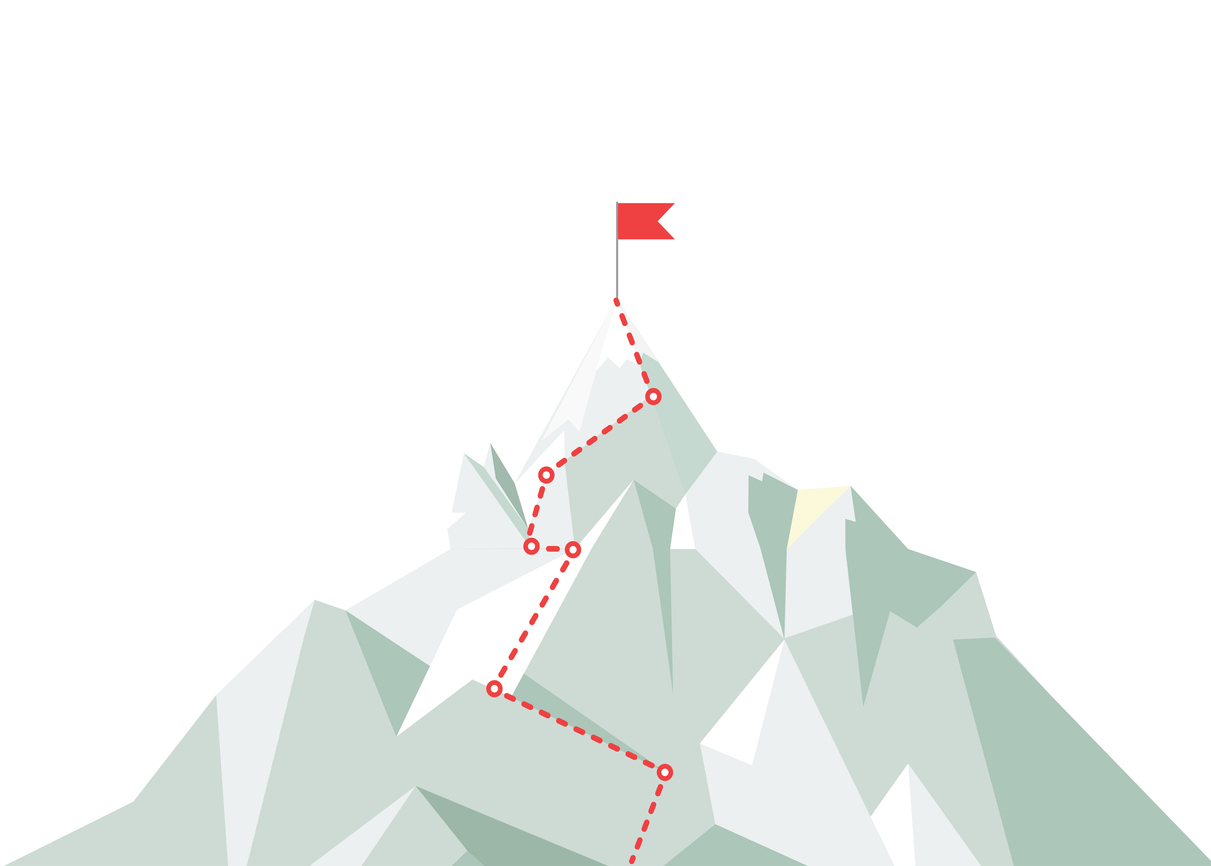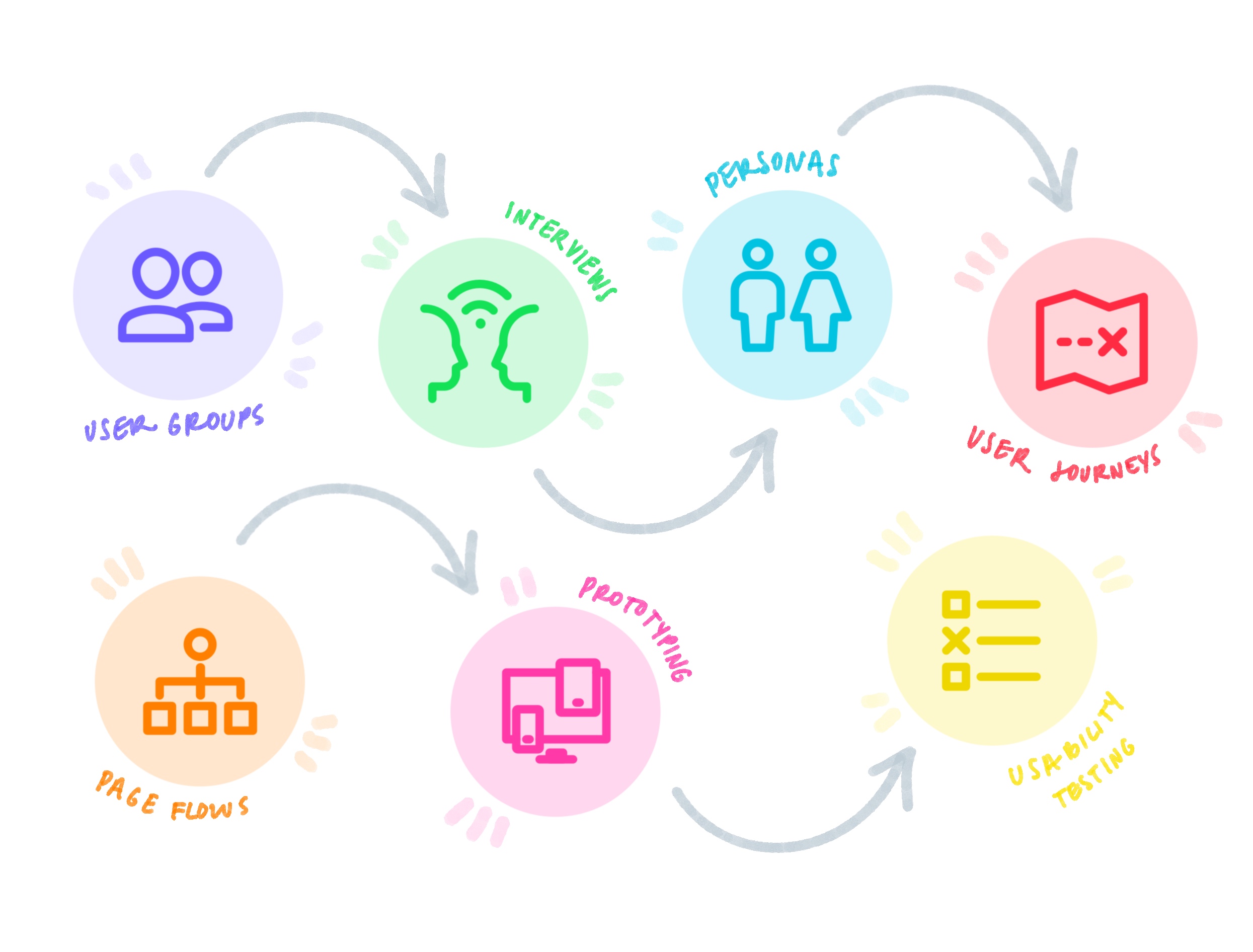What is Service Design?
The question of ‘what is service design?’ is actually quite a tricky one to answer; there are lots of definitions out there.
For example, Nielson/Norman Group refer to service design as “the experiences of both the user and employee by designing, aligning, and optimising an organisation’s operations to better support customer journeys”.
And the UK’s Government Digital Service (GDS) refers to it, as “the design of whole services”.
Though for me, the simplest way to think of it is that service design is a design methodology. Process designers (as service designers are sometimes called) want to design optimal experiences for customers, and they do this by using user human-centred design as the framework and the process of Design Thinking.
The design of whole services
From end-to-end: this means from when the user starts trying to achieve a goal to when they finish - including both content and transaction agnostic to the department providing it
From front to back: this means the user-facing service, internal processes, supporting policy or legislation and organisational, financial and governance structures of the service
In every channel: digital, phone, post, face to face and physical elements
Source: Government Digital Service
Service design in practice
To put this into more of a workable consumer context, I, like many service designers, like to use the example of going to the theatre.
Going to the theatre starts when you think about going, not when you arrive at the theatre itself. So the service designer considers the whole user experience right from that initial point of thinking about going, to what happens after the show itself - covering the whole journey from start to finish:
Deciding what you want to see and when - choosing dates/times/location and whether you want to watch a comedy or thriller, drama or musical
Booking your tickets - picking your seats and booking/paying for your tickets (which is often the only touchpoint that UX designers will work on as the only digital component)
Delivery of your tickets and pre-show communications - in digital or physical format, and at what intervals
Arrival at the theatre - deciding between modes of transport and getting to the destination
The actual theatre experience - everything from pre-show drinks and other on-site facilities, to the performance of the show itself
Post-show - everything from outbound travel to follow-up communications, etc.
It’s the transitions between all of these physical, offline, and digital transactions that are the most challenging to design for. And as much as people often don’t think about how much time and effort goes into good design in general, they appreciate even less quite how much thought and research goes into good Service Design.
UX Design vs Service Design
So what is the difference between UX Design and Service Design, anyway? Well, in the simplest sense, UX is about what the user experiences, whereas service design is concerned with how the experience is delivered to users.
Returning to my theatre example, UX may (sometimes) map the whole journey, but they only get to work on the digital aspects, like the theatre’s website and booking system - they usually don’t have the power to influence everything.
While both disciplines have a strong focus on a balancing business-customer benefits, Service Design has the potential to impact more aspects of the user journey as a whole by including things that, although not closely related to the business, do nonetheless impact the satisfaction/experience of the user (such as public transport suggestions).
Think of it this way:
A Service Designer is like an architect that oversees and sets the whole vision - working with different professionals/stakeholders such as engineers, heritage protections, council, etc
A UX Designer is more like an interior designer - only focusing on one (often digital) element of the overall experience, and often with less influence over other stakeholders
Service Designer = architect
UX Designer = interior designer
Service design gives context of where the digital interaction sits in the bigger picture, and rather than it being a case of one or the other, the best user experiences are created when service design and UX design is worked on by the same team(s) working closely with each other.
One reason for this is that although UX/UI Design has a fairly well-established career path, Service Designers (considered by some as the “least designer-y” designers) often come from such diverse backgrounds as market research, anthropology, or marketing. This means they bring some additional skills and experiences to projects, in addition to their shared familiarity with user-centred design tools and frameworks.
Service designers also have one additional, unique, tool in their toolbox: the Service Blueprint.
Piecing it all together: The service blueprint
A service blueprint is how service designers map out all journeys - both ‘visible’ and ‘invisible’ - to see what’s needed, how, and when.
The service blueprint explores the journey from all angles and provides a detailed look of each particular part - enabling you to consider individual aspects in detail, as well as a more complex whole.
For example, the service blueprint for “buying a theatre ticket”, would help you discover any weaknesses in the online booking process, such as being left with a single seat empty in a row.
And although you do need to have a clear idea of a user journey before you can use the blueprint, its use isn’t limited to existing services - you just need to have an understanding of what it would be.
This can be especially useful in helping you identify gaps for new experiences, as well as things that might be missing in an existing journey - both front- and backstage.
Frontstage/backstage design
Sticking with the theatre theme here, the service blueprint helps you to understand all of the potential customer touchpoints, both “on stage” - the things that are visible/tangible to the user - and “backstage” - everything else that (needs to go on) behind the scenes for the visible elements to work effectively.
For a more detailed overview and example blueprint, I recommend this article from Nielsen Norman Group.

Achieving service design project success
So now you know what service design is and how it differs from UX design, and understand the purpose of the service blueprint, let’s take a quick look at 3 key factors when it comes to an effective service design project.
An in-depth research stage
Sometimes the problem and/or needs are not as well articulated as they are in (the majority of) UX projects, and we may not know what is causing a problem, or even what is the problem is - we just see that customers do not “behave” how we would like them to.
Understanding that bigger context means more thorough research is needed. And with that also comes a need for a bigger budget. However, this additional research budget is only a small amount when you consider all the other costs incurred throughout the whole customer experience.
Service design helps to connect all areas relating to product development - but also other areas of the business such as marketing, sales, and customer experience. What makes it worth it to spend more resources on this research/discovery/understanding stage is that findings will not only be relevant for the upcoming stages of the service design project but can be a key influencer of brand success as they supply valuable insights for design departments, marketing and influence strategical decisions.
A continuous, collaborative effort
From improving the employee experience for an FMCG company to the customer ordering and buying process for an automobile company to a digital streaming service, all of the service design projects that I’ve worked on have benefited from a great handover between teams. Better still, when they had the same team working on the design, end-to-end.
This is where working with a design studio - that supports the whole project - can pay dividends. And it’s especially worth considering working with an outsourced team (when you can) if there is a lack of design leadership within your organisation and Design struggles to have its voice heard in projects.
Doing so can help you to overcome various operational design challenges, provide an impartial (non-political) perspective, as well as sharing ideas from other projects they have worked on, and even help you to decide between strategic and tactical projects.
An effective kick-off
Whether or not external support is an option, if there’s one thing that sets a service design project it’s a strong kick-off meeting at the start of the project.
Following the service design process means accounting for both users and the business, so defining what the business wants to achieve early on, helps to prioritise by allowing you to define “by doing [this], we should prioritise [that]”.
Because there are so many areas of an organisation touched by service design, there are naturally lots of stakeholders so a kick-off meeting at the start of the project that sets the expectations is imperative. It also gives you something concrete to refer back to throughout the course of the project to help keep things in scope.
Ready to start your next service design project..?
So, there we have it. Hopefully, you now have a greater understanding of what we mean by the term ‘Service Design’ and how rethinking your service as a whole - rather than as siloed issues - leads to a better user experience.
We’ve also had a brief look at why the service blueprint is such an important tool, and why research, communication and kick-offs are so important when it comes to the delivery of successful service design projects.
If you’re interested in having a conversation around your next service design project, our experienced team is here to help. Get in touch to find out more.





